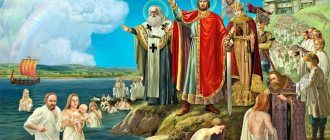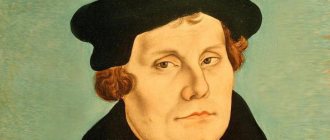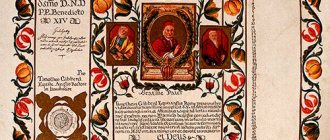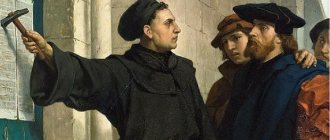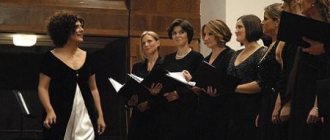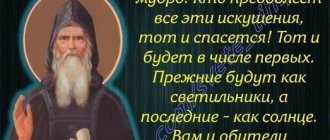early years
Martin was born on Saxon soil, in the city of Eisleben (Germany). His father mined copper in mountain mines. With the birth of a boy, the family moved to Mansfeld, here their business took off, and the Luthers became wealthy citizens.
When Martin turned fourteen, he began studying at a Catholic school in Magdeburg. With his friends, the boy earned money by singing church songs at the houses of believers.
In 1501, his parents sent him to receive an education at the University of Ertfurt. At that time, it was believed among the burghers that the best education for a man was a higher legal education. However, Martin studied at the faculty of the “seven liberal arts”. Having received a master's degree, he began studying legal sciences.
In 1505 he decided to become a monk, despite his father's objections. There are different versions about the reasons for this choice. According to one of them, this happened from too strict upbringing, according to another - because of Luther’s depressed mood and awareness of his sinful life. There is also a legend according to which he was frightened by a strong thunderstorm and decided to change his life. Perhaps the young man was influenced by communication in humanist circles.
Luther's parents - Hans and Margarita (artist L. Cranach)
The process of accepting monasticism was quite difficult for Luther, but he made every effort to implement his decision. He strictly followed all the rules and was distinguished by exemplary behavior. He became a member of the Augustinian Order, which was headed by his friend I. Staupitz. He took the vow of monasticism in 1506, and a year later received the priesthood.
Luther Memorial Sites in Eisleben
The city of Eisleben is located in Germany , in the state of Saxony-Anhalt . In 1946 , in honor of Martin Luther, the city was renamed Lutherstadt Eisleben ( Lutherstadt , you guessed it, translated as Luther's ).
Since, in fact, Luther practically never visited Eisleben , there are only two monuments dedicated to the life of Luther UNESCO . The house where he was born and the house where he died.
House where Martin Luther was born
The house where Martin Luther became a place of pilgrimage for followers of the new Protestant faith. In 1689 , the original house was damaged by fire, and a new one was built in its place, in which a small school was opened. In 2007 , the house was reconstructed and the Martin Luther Museum .
House where Martin Luther was born
The house where Martin Luther died
The house where Martin Luther has also become a small museum. In 1546 , Luther returned to Eisleben , and settled in a new house, much richer and larger than the one in which he was born. However, just a month later, Martin Luther died.
The house where Martin Luther died
Also in Eisleben to Martin Luther on the market square .
Monument to Martin Luther in Eisleben
Teaching activities
Since 1508, Luther became a teacher at the University of Witterberg. At this time he studies the works of St. Augustine. One of his students was the German writer E. Alberus. Martin combined his teaching activities with his own education, and in 1512 received a doctorate in theology.
Luther once made a trip to Rome, from where he returned greatly impressed. He was struck by the corruption of the Roman clergy. He himself was very pious, constantly felt his weakness before God, and carefully studied biblical texts. In addition to teaching, he was also a caretaker in 11 monasteries, as well as a church preacher.
Luther at the Diet of Worms (Werner, 1877)
[edit] Elements of teaching
[edit] Doctrine of the state
According to Luther's teachings, God created two kingdoms: God's and the secular. It was he who made the dual nature of man, which is both spiritual and physical. The existence of two kingdoms, according to Luther’s teaching, is also determined by the fact that the world does not consist mainly of real Christians. If true Christians prevailed in it, then there would be no need for princes, masters, sword, or law. True Christians would not allow any violations of the law and would love each other. The inconsistency of human nature, the extreme imperfection of the world in which evil reigns, are, according to Luther, the reasons that brought the secular kingdom to life by God's will. By the concept of the secular kingdom, he understood the entire sphere of relations between people, directly regulated by human laws and regulations. It covers the totality of various connections: economic, trade, family, and most importantly, political.
The state must take care of external relations and internal order, resolve secular conflicts, and fight manifestations of evil. Persons performing these functions have power; their power over the environment is based on violent artificial domination. Luther urged rulers to care not about their own benefit, glory, etc., but about the well-being of the country. The prince (monarch) rules expediently, rules wisely, who uses power not as a privilege, but exercises it as a duty assigned to him by God. That is, a Christian ruler must consider himself a servant, and not the master of the people.
Luther also identified a group of strictly earthly secular factors that should be taken into account in the strategy of government. These are: the real state of the country, social and political expediency, the ability of the administration to think through and implement its intentions. Luther instructed rulers to listen to the voice of reason and to realistically adapt to the situation. So, the reformer advocated a sober combination of strength and wisdom in the exercise of state power.
Secular power should reach no further than the body and property of a person. In all other respects, the state has the right to demand complete obedience. Only in one case does he recognize the possibility of resistance to power: when rulers neglect the freedom of a Christian to build his own relationship with God, in the event of rulers’ interference in matters of faith.
[edit] Doctrine of law
Martin Luther was very critical of the law of that time. Canon law was particularly criticized. The reason for this is the canonists’ defense of the positions and claims of the Roman Catholic Church.
Luther expressed the idea that the kingdoms of the world should be governed by coercive laws. Secular power cannot do otherwise. In other ways, it is impossible to cleanse the earth of evil, restore order, keep Christians calm, or punish criminals. But secular power is limited to earthly, human affairs and is powerless in matters of faith and conscience. The freedom of the soul, the realm of faith, the inner world of man are outside the jurisdiction of the state, beyond the scope of its laws.
Having classified all the laws, he put the divine law, the same for everyone, in first place. Secondly, the natural law inherent in people. In third place was the imperial law regulating all secular government. In fourth place are the laws of cities and lands, which are binding only for certain areas. Luther recognized that all written law follows from natural reason, natural law, which, being derived from the will of God, is a qualitatively different phenomenon than divine law. Natural law allows secular power, which relies on it, to control the external behavior of people, property, and things.
No. 4. He put forward many ideas that were radical at the time.
What Martin Luther did and taught was extremely radical for his time. Among other things, he challenged the authority and office of the Pope by declaring that the Bible was the only source of divinely revealed knowledge. Moreover, in Luther's time it was believed that priests should be mediators between God and humanity. Instead, Luther considered all baptized Christians to be a sacred priesthood, and he explicitly mentioned this in his writings. Additionally, it was a common claim during those times that the clergy pursued a higher calling than others, such as farmers or even the king, because they were dedicated to serving God. Luther, on the other hand, emphasized the ability of all Christians to function as equals under God, regardless of the nature of their work. This was a radically democratic concept at the time. In the words of renowned Luther scholar Paul Althaus, “Luther brought down the community of saints from heaven to earth.”
[edit] Essays
- Berleburg Bible
- Lectures on the Epistle to the Romans (1515-1516)
- 95 theses on indulgences (1517)
- To the Christian nobility of the German nation (1520)
- On the Babylonian Captivity of the Church (1520)
- Letter to Mulpfort (1520)
- Open letter to Pope Leo X (1520), September 6.
- About the freedom of a Christian
- Against the damned bull of the Antichrist
- Speech at the Worms Reichstag on April 18, 1521
- On the Slavery of the Will (1525)
- Large and Small Catechism (1529)
- Letter of transfer (1530)
- Praise of Music (German translation) (1538)
- About the Jews and their lies (1543)
No. 1. He successfully protested against the corrupt practice of leniency.
In Roman Catholicism, leniency is “a way to reduce the penalties for sins.” By the end of the Middle Ages, indulgences were widely used by the clergy, who used them as a tool through which the Church forgave people's sins in exchange for money. It was in protest against this immoral and evil practice that Martin Luther began the Reformation movement. Luther's protest against indulgences became widespread. This practice was widely used during his lifetime. The protest became so influential that even 10 years after Luther's death, in 1562, the Catholic Church continued to restrict the use of indulgences in the Council of Trent. A few years later, in 1567, Pope Pius V abolished all grants of indulgences involving any fees or other financial transactions.
Image of sale of Catholic indulgences
[edit] Bible Translation
In the Wartburg, Martin Luther remained until May 1, 1522 inkognito as "Landlord Jörg". He translated the New Testament into German in the fall of 1521. He managed to do this in 11 weeks. For this purpose, he used a copy of the Greek Bible of Erasmus of Rotterdam[4] as the original; he also used the Latin translation of the Bible and the Vulgate. Martin Luther's translation was published in September 1522. In 1523, his first part of the translation of the Old Testament also saw the light of day; both translations reached 1525 in 22 editions and 110 reprints. Thus, up to a third of all Germans who were able to read had this book in their home.[5] In 1534, Luther translated the remainder of the Old Testament. Both Testaments form Martin Luther's famous Bible.
With this translation, Martin Luther made the content understandable to the common people. True, before this there were already 14 High German and Central German editions of the Bible. But these translations, due to their stilted German language, were difficult for people to understand.
Martin Luther translated less literally, but tried to transfer biblical expressions (sensus literalis) into German according to their meaning. His writing style influenced the style and word formation of the German language for centuries. Thus he came up with words like Feuertaufe
- baptism of fire,
Bluthund
- bloodsucker or gundog,
Selbstverleugnung
- self-denial, selflessness,
Machtwort
- decisive word,
Schandfleck
- brand, stain of shame,
Lückenbüßer
- inferior deputy,
Gewissensbisse
- remorse,
Lästermaul
- earpiece and
Lockvogel
- bait.
He also authored such metaphors as “ Perlen vor die Säue werfen
” - to scatter pearls before swine, “
ein Buch mit sieben Siegeln
” - a secret sealed with seven seals, “
etwas ausposaunen
” - to trumpet, “
im Dunkeln tappen
” - to wander in the dark , “
ein Herz und eine Seele sein
” - live in perfect harmony, “
auf Sand bauen
” - build on the sand, “
Wolf im Schafspelz
” - a wolf in sheep’s clothing.[6]
[edit] Notes
- Baynton, 1996, Chapter 11. My Patmos
- Martin Luther. krugosvet.ru. Retrieved February 4, 2021.
- Creuziger, Caspar. leipzig-lexikon.de. Retrieved 5 December 2013. Leipzig Lexikon (Leipzig: TDG, 1998)
- Horst Herrmann: Martin Luther.
Eine Biography ; Berlin: Aufbau Taschenbuch-Verlag, 2. Auflage. 2003; S. 464. - Bernd Moeller, Germany im Zeitalter der Reformation
S. 90 - Jan von Flocken: 1521: Wie Martin Luthers Bibel unsere Sprache prägt
; in: Die Welt, Ausgabe vom 25. Januar 2008.
Challenge to the Catholic Church
Martin Luther criticized the Christian aspects of teaching, but, of course, indulgences as a means of relieving sins deserved special condemnation from him. Rumors about his theses spread like lightning. In 1519, Martin Luther was summoned to court. Shortly before this, reprisals were committed against the ideologist of the Czech reformation, Jan Hus. Despite everything, Luther pointedly expressed doubts about the correctness of the Catholic papacy.
Leo X, without thinking twice, anathematized him, which at that time was a terrible punishment. Then Luther struck back - he publicly burned the papal document that spoke of his excommunication from the church, and announced that from now on the fight against the Catholic clergy had become the main cause of the German people.
The pope was supported by Charles V. The Spanish king summoned Martin Luther to a meeting of the Reichstag, where he calmly declared that he did not recognize the authority of either councils or popes, because they contradict each other. A famous quote from the founder of Protestantism should be cited. “I stand on this and cannot do otherwise” - these are the words from the speech of Martin Luther.
